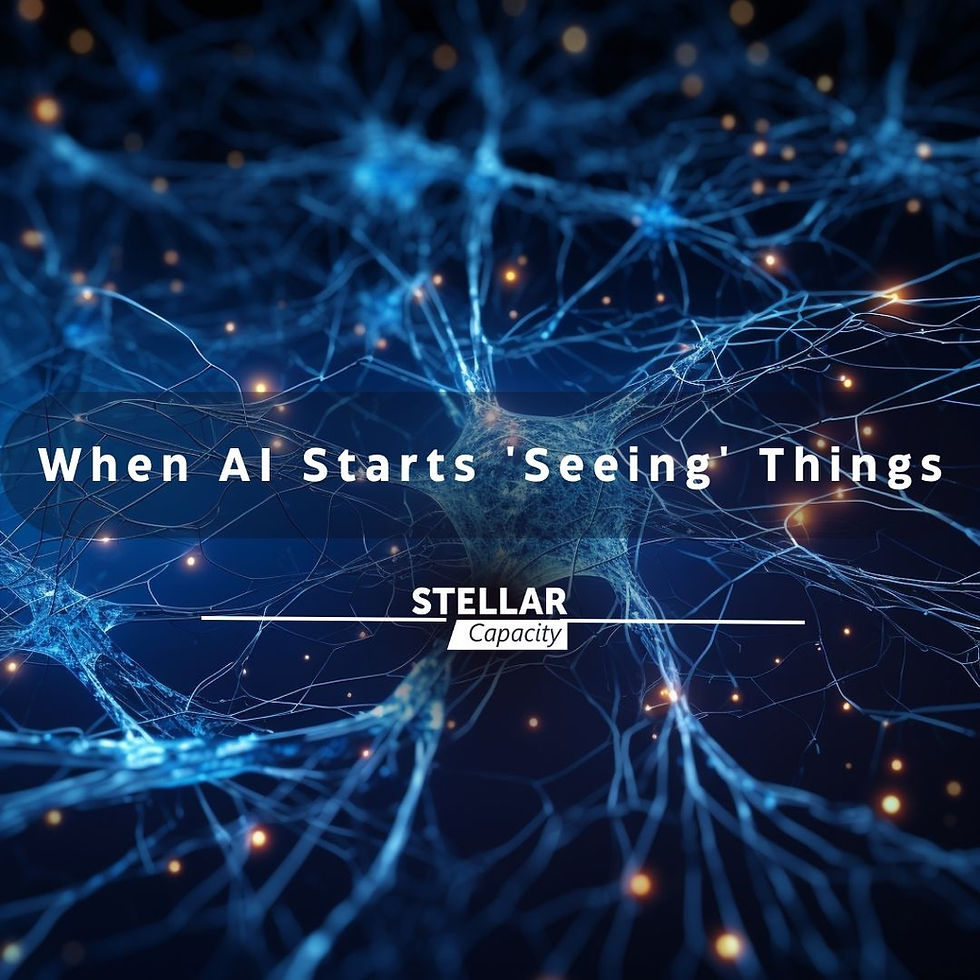Understanding the Phenomenon of AI Hallucinations
- palak14
- Jul 18, 2023
- 3 min read
Updated: Aug 11, 2023
While typically associated with human experiences, hallucinations are now a tangible aspect of Generative AI systems. Just like our minds sometimes fill in the gaps of reality, AI models can 'hallucinate' by generating data based on non-existent patterns. However, these peculiarities in AI understanding are rooted in their training and programming, setting them apart from living beings' innate adaptability.
Hallucinations, real sensations that lack corresponding external stimuli, can touch upon all our senses and differ vastly in complexity. They arise when our senses become disrupted, compelling our minds to fill in the blanks of reality, occasionally leading to entirely unrealistic outcomes.
In generative AI, the process mimics, to an extent, the workings of our own brain but within the context of AI's artificial neural networks. The catch here is that an AI system's understanding is rooted in its training - it 'comprehends' only what it has been instructed to comprehend. This is a key distinction that sets apart living beings, with their inherent capacity to learn and adapt, from AI systems, which are restricted by their programming and training data.

Picture: imaginative representation of Artificial neural networks
What Contributes to Hallucinations?
Several factors contribute to AI Hallucinations, including:
Inadequate or distorted training data: If the AI's training data is limited, unrepresentative, or biased, the AI might extrapolate from this incomplete framework resulting in erroneous or unforeseen outcomes.
Task complexity: Certain tasks pose a high degree of ambiguity or nuances. The AI, grappling with these complexities or confronted with insufficient training data, may generate unusual results, especially if the question asked contains a variety of conflicts to solve.
Deficient model architecture or training: Sometimes, the AI model's structure and presets or training methods contribute to hallucinations, where the model generates a result with a tenuous connection to reality.
A prevalent instance of AI hallucinations today mainly involves text. For example, an early version of LLM, when queried about which weighs more: a kilogram of water or a kilogram of oxygen, might falter due to a lack of training data or the complexity of the question.a (Nick Babich)

However, truly concerning are the subtle and less apparent hallucinations that could be possible realities. This can have significant real-world consequences, especially in areas like healthcare diagnostics. In a worst-case scenario, a model trained on insufficient data might fail to identify diseases or hallucinate new data that is then acted upon.
Can We "Cure" AI Hallucinations?
In recent months, actors like OpenAI for ChatGPT have enhanced their model to minimize the risk of hallucinations, but the problem persists. While it may not be possible to eliminate hallucinations in generative AI given the current state of technology, there are strategies to reduce their frequency and impact:
Improve data quality: Ensuring the AI has a large, varied, and representative training dataset can help it better understand the patterns it's meant to learn.
Improve model architecture and training: Adjusting the design of the AI model or tweaking the training process can help minimize hallucinations.
Use evaluation algorithms: Implementing algorithms that evaluate and filter the AI's results can help catch and correct hallucinations before the content is finalized.
In this rapidly evolving technological landscape, ongoing refinement of data, model structures, and evaluation mechanisms can greatly mitigate AI hallucinations, enhancing their reliability and practicality. It's a reminder that the road to artificial intelligence mastery isn't a straightforward sprint, but a marathon of continual learning, fine-tuning, and innovation.
In our Generative AI Bootcamp, we focus on teaching these critical skills so you can use generative AI in an effective and responsible manner. Understanding how AI learns, and how we can guide that process, is the key to meaningful use of these tools - and minimizing the risk of falling for AI's hallucinations. To learn more about this fascinating topic and develop your own understanding and skills, register for our Generative AI Bootcamp at info@stellarcapacity.com and explore this dynamic and rapidly growing technology with us!

Comments